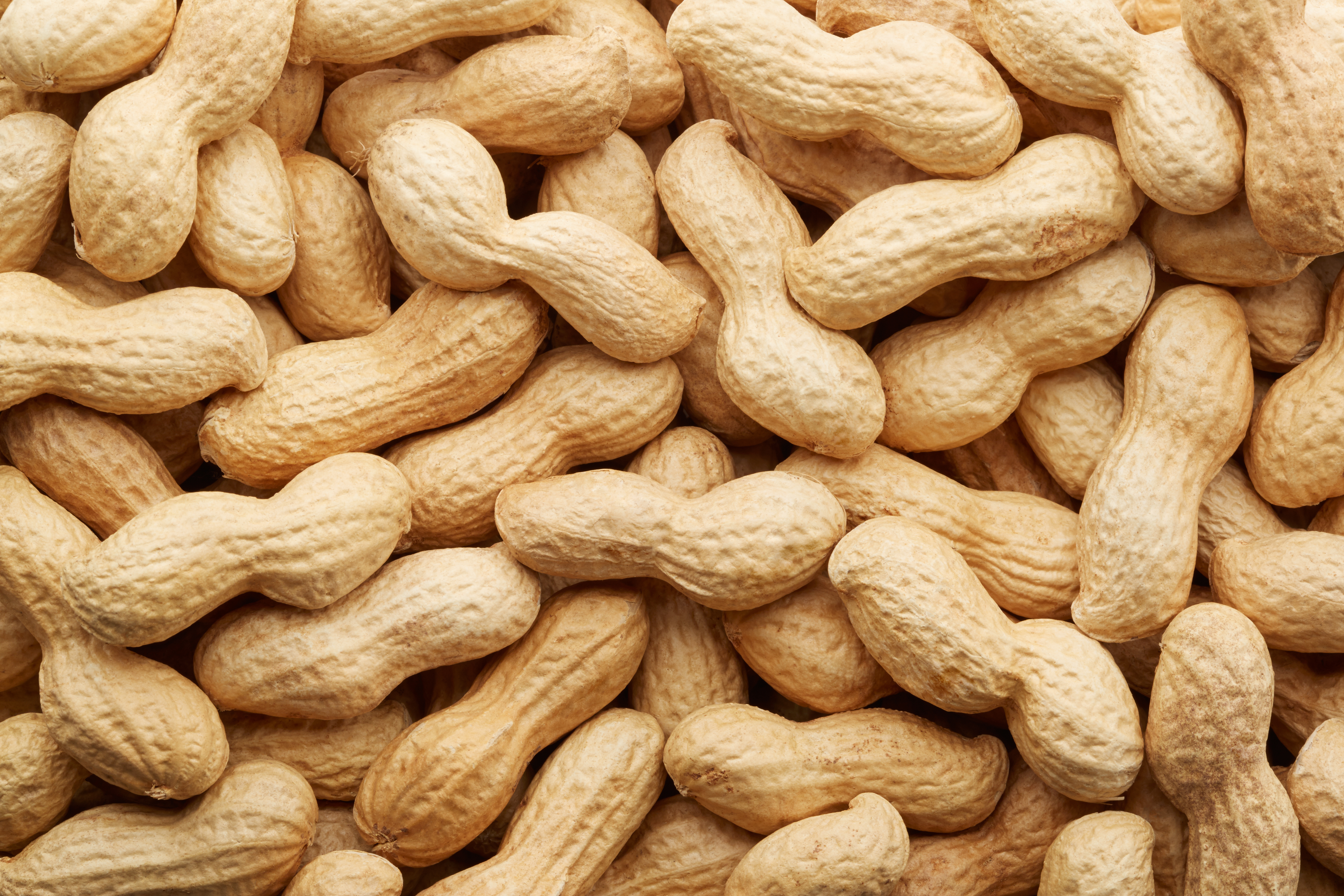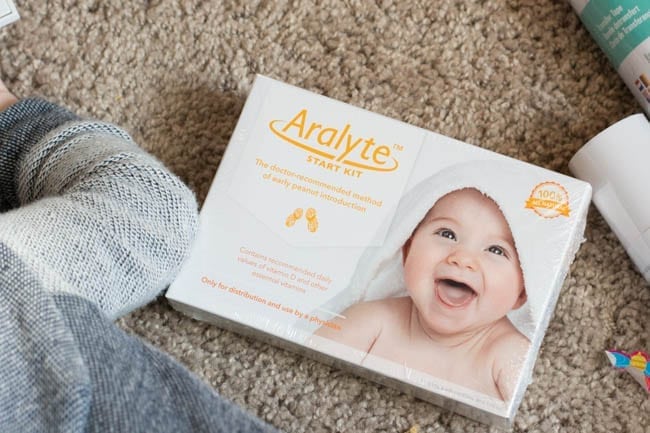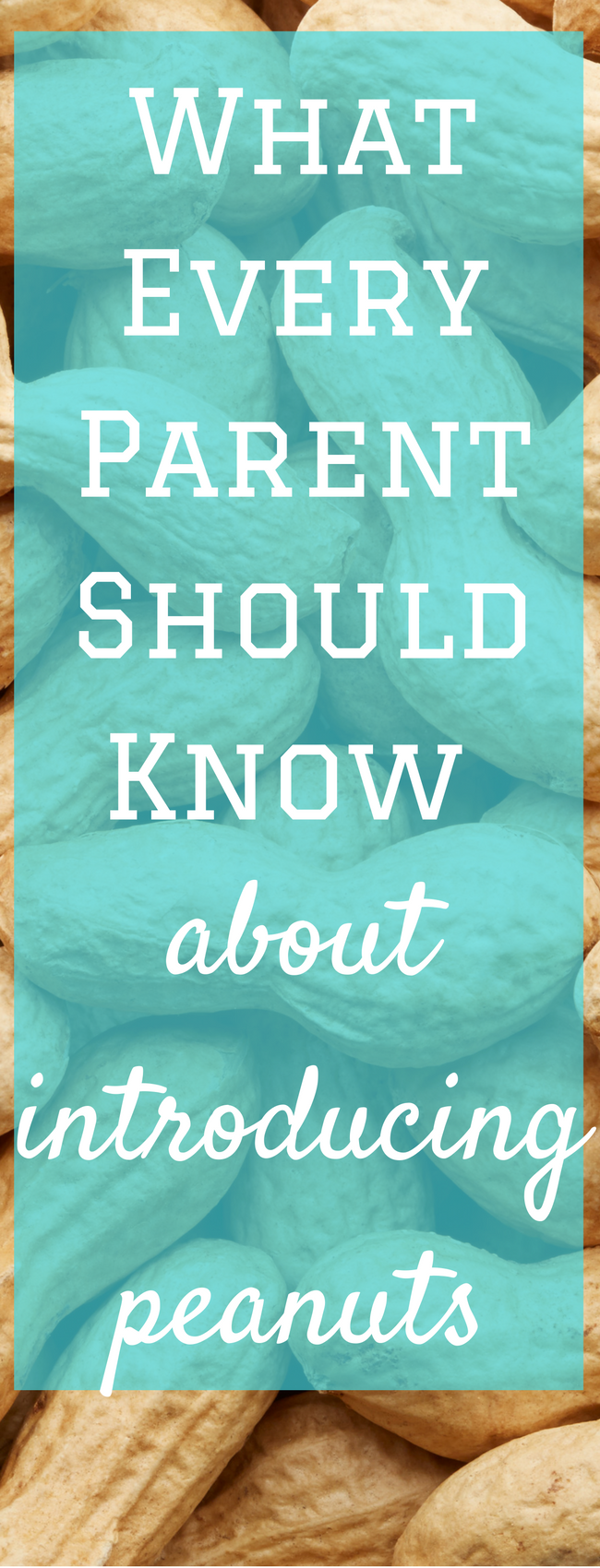Nervous about introducing peanuts to infants? You aren’t alone. Knowledge is power, and this post may help you feel a little more at ease about giving your baby peanuts.

The first time Oliver tried peanuts, we were at Disneyland.
I had gotten on a ride with Jack, and when I came back, he had a mouth full of a peanut butter and jelly sandwich that was given to him by his well-meaning grandma. She thought I had already introduced peanuts (he was about 8 months at the time).
Even though we don’t have a family history of allergies in our family, I still held my breath the rest of the day that he wouldn’t have a reaction.
And fortunately, he didn’t.
Did you know that exposure peanuts is the leading cause of anaphylaxis and food allergy-related death, and over 15,000 children across the country have to visit the ER due to a peanut allergy each year?
There’s certainly good reason to be nervous about introducing peanuts to an infant.
It’s pretty scary stuff. But fortunately, we live in a time where there is a lot of research being put into allergies, and there’s also a lot more awareness about it within schools, churches, and homes.
Regardless, I think most parents feel a little apprehensive about the first time their kiddo tries peanuts.
So today I wanted to share a few tips for introducing peanuts to infants. Obviously, I am not a physician, and if you have any concerns (especially if there is a history of allergies), make sure you consult with them.
Thank you to Aralyte for partnering with us on this post!
Know Your Child’s Risk
First off, it’s important to know your child’s risk for peanut allergies. While not every child who has a peanut allergy will have any indication prior that they have it, here are a few things to consider:
- Family history – if there are others in the family who have nut allergies, they may be at a higher risk of developing one as well.
- Eczema – this can be a big warning sign that a child has some kind of allergy. Eczema appearing when a baby is a young infant (even before
- C-Section
- Egg Allergy
- Asthma
- Tingling of mouth after eating certain fruits
You can take a peanut allergy risk test here if you are unsure about your child’s risk.
If your child is at an increased risk, make sure you talk with your child’s physician about the best way to introduce peanuts. It may be recommended that they be tested for peanut allergies (usually with a skin prick test) if the risk is high enough.
If your child doesn’t appear to be at any higher of a risk than anyone else, no particular precautions have to be made.
Start Early
While it used to be recommended to introduce peanuts later on (typically past a year), groundbreaking research has found that introducing peanuts earlier, rather than later, can reduce the incidence of a peanut allergy by up to 98%.
In 2015, The LEAP Study was released that showed this. 640 infants that had severe eczema or egg allergies were either asked to consume peanuts or avoid them until they turned five years old.
The studies final conclusion was this:
The early introduction of peanuts significantly decreased the frequency of the development of peanut allergy among children at high risk for this allergy and modulated immune responses to peanuts.
So now, peanuts are begin recommended for early introduction, even for those at a higher risk. Pretty crazy stuff!
If your child isn’t at a higher risk, you can introduce peanuts once they’ve been started on solids. It’s not really recommended as a first food, but once they are tolerating other solids, you should be fine to introduce peanuts.
First Exposure
There are a few different ways to introduce peanuts. In an NPR article, Dr. Ruchi S. Gupta, a pediatrician and immunologist at Northwestern University is quoted as recommending the following:
The best way to introduce the food, she says, is to add hot water to 2 teaspoons of peanut butter to make a warm puree. Put a little of this puree on the tip of a spoon and feed it to your child. Then wait and watch for 10 minutes, she advises, checking the baby for any negative reaction, such as hives, a rash, behavior changes or trouble breathing. If all is OK you can continue to feed the puree slowly; but keep an eye on the child for about two hours.
However, there is an even better way to introduce peanuts that is being recommended by leading pediatricians and allergists across the United States – Aralyte.
Aralyte is a safe and data-centered approach to introducing peanuts. It is currently the only doctor-recommended liquid formulation on the market. It’s considered safe for homes with peanut allergies, and it can be used in the safety of your home.

So, what is it? Well, that’s the first thing I asked when I first heard about it. Basically, it’s a solution that contains an all-natural distilled peanut extract, as well as other essential vitamins. It can be used in combination with breastmilk or infant formula.
It is perfect for early-introduction to peanuts between the age of 4 and 11 months. It preferred over using peanut butter for first exposure because it’s less than a teaspoon of liquid formulation that has no risk of choking. The first dosage can actually be given in front of a physician (free of charge) if a child is at a higher risk.
I highly recommend reading the FAQs about Aralyte here. If your child’s physician has questions, you can direct them to this page.
One three month kit costs $180, though you can get a 15% discount by using the coupon code Aralyte x Clarks at checkout (expires 60 days after December 11th, 2016). However, as I already mentioned, the first dose can be free if done in the presence of a physician.
Avoid Whole Nuts
Regardless of how you introduce peanuts, an infant or young toddler should not be given whole peanuts. This is a huge choking risk, and it’s definitely not something you should do – regardless of their allergy status.
Ways for Baby to Enjoy Peanuts and other Nuts
Peanut butter is definitely one of the best ways for your child to enjoy peanuts (or other nuts). It’s typically pretty creamy, and it can be added to other meals easily.
Adding peanut butter to yogurt, infant cereal, or even with a little bit of water can be some simple ways to incorporate peanuts into your child’s diet. My sons both loved peanut butter toast from a young age, so that’s another great option.



I’m allergic to peanuts so we have always been careful about introducing peanuts to our kids. With Little J we had him allergy tested first, and with Little A my husband just gave her a peanut butter and jelly sandwich and we watched her closely. Luckily, neither of them are allergic, but it’s no fun living with a peanut allergy!